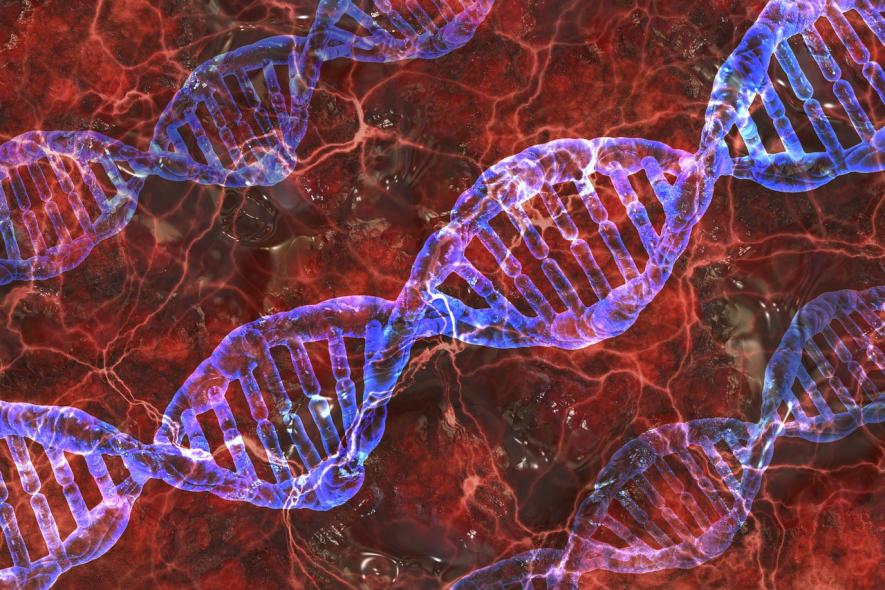Remnants of Viruses Hidden in DNA can Fight Lung Cancer

Image Courtesy: Pixabay
The human DNA is an excellent source of history of its evolution and the encounters our ancestors had with viruses thousands and even lakhs of years back. It contains remnants of dormant viruses that can wake up again and become active when they get a suitable cellular environment.
Wait! This may not be all dangerous; instead, it can help us to fight as dangerous a disease as cancer.
Scientists have found that remnants of ancient retroviruses staying silent in our DNA can reignite during lung cancer and help fight it. Scientists see the possibility of developing a cancer immunotherapy by capitalising on this phenomenon. A study by the Francis Crick Institute, UK, was published in Nature on April 12.
Before reviewing the study’s findings, let’s look at some of the basics. What is a retrovirus? A retrovirus is characterised by the presence of RNA as the genetic material along with a peculiar type of enzyme known as reverse transcriptase (an enzyme is basically a protein involved in many crucial cellular functions). With reverse transcriptase (RT), the RNA is transformed into viral DNA and integrated into the human DNA with another enzyme named integrase. This peculiarity of retroviruses makes integrating the viral genetic material into the human genome possible.
The research team looked for endogenous retroviruses (ERV), ancient viruses with their genetic material integrated into human DNA. ERVs can be passed from generation to generation, like any other genes. The ERVs form up to 5% of the human genome.
The UK research team, in its study on lung cancer—the leading cause of cancer-related deaths worldwide—tried to understand why some patients react better to immunotherapies than others. They found that the relics of ERVs can be activated in response to uncontrolled cancerous cells. This phenomenon can inadvertently help cancer patients as the activated ERVs attack cancer tumours after activation.
The activation of ERVs and targeting the cancer tumours come via a particular type of B cells. These cells are part of the immune system and produce antibodies and proteins that attack a foreign object like a virus, bacteria or any such antigen.
The hallmark of cancer is the uncontrolled growth of cells. This happens as the control mechanism of the cell is lost with the initiation of cancer. Cancer cells, containing the genetic remnants of the dormant ERVs, get activated. The reactivation of the ERVs cannot revive the whole virus; instead, some viral fragments are created, triggering the immune system to respond quickly.
Cancer cells, with ERVs activated, become the target of the immune system, especially B cells. Remember, the immune system recognises a foreign object and attacks it through various mechanisms—one of which is the antibody production by B cells. After seeing the cancer cells with ERVs activated, B cells target them thinking they are viral cells. In this process, tumour cells are attacked by immune cells.
Professor George Kassiotis, one of the corresponding authors of the Nature research paper, explained the phenomenon to the BBC: “The immune system is tricked into believing that tumour cells are infected and it tries to eliminate the virus; So, it’s sort of an alarm system. The antibodies summon other parts of the immune system that kill off the ‘infected’ cells—the immune system is trying to stop a virus but in this case, is taking out cancerous cells.”
It is a remarkable role reversal for retroviruses, which, in their heyday, Kassiotis added, “might have been causing cancer in our ancestors” due to how they invade our DNA but are now protecting us from cancer.
The researchers see possibilities in developing therapies or vaccines using the natural phenomenon’s help. Vaccines contain parts (like proteins or genetic material) or the whole (in inactivated form) of a pathogen and are administered in a controlled dose. This mimics the natural infection by the pathogen, and the immune system elicits its response against it, forming a memory about the pathogen. This memory lasts for some time and if the pathogen attacks us in reality, then the immune system fights it off readily.
While the researchers discussed developing a cancer vaccine by taking advantage of ERV activation, they hinted at such a mechanism. “We now know that areas of B cell expansion can help us predict a positive response to checkpoint inhibition. With more research, we could work to boost B cell activity in a targeted way for patients less likely to respond,” said Julain Downward, another corresponding author of the paper.
The research is a part of the TRACERx study, a massive project of the UK about various aspects of cancers. Other TRACERx researchers have also shed light on different aspects of lung cancer.
Get the latest reports & analysis with people's perspective on Protests, movements & deep analytical videos, discussions of the current affairs in your Telegram app. Subscribe to NewsClick's Telegram channel & get Real-Time updates on stories, as they get published on our website.















